In recent years, the Chinese automotive industry has stood out for its rapid evolution, with several companies developing modern technologies, launching innovative vehicles and conquering markets around the world. However, from time to time, some Chinese brands surprise with a different approach: instead of innovating completely, they end up creating copies of iconic models already consolidated. A recent example of this phenomenon is the plug-in hybrid van Songsan Motor Summer, which reproduces, in a somewhat questionable way, the look of the legendary Volkswagen Kombi first generation, also known in Brazil as the Little Owl Kombi.
You've probably heard of replicas of Western vehicles being produced in China, and this practice is not new. But when a brand tries to emulate a vehicle like the Kombi, an icon that represents the spirit of adventure and freedom for many, the story takes on a new twist. irony. After all, the original Kombi carries a history and design that transcends time, which is something difficult to replicate without falling into the territory of the “Shopee Kombi”. This popular nickname in Brazil for products inspired by or copies of original items reflects well the sentiment behind this creation by Songsan Motor.
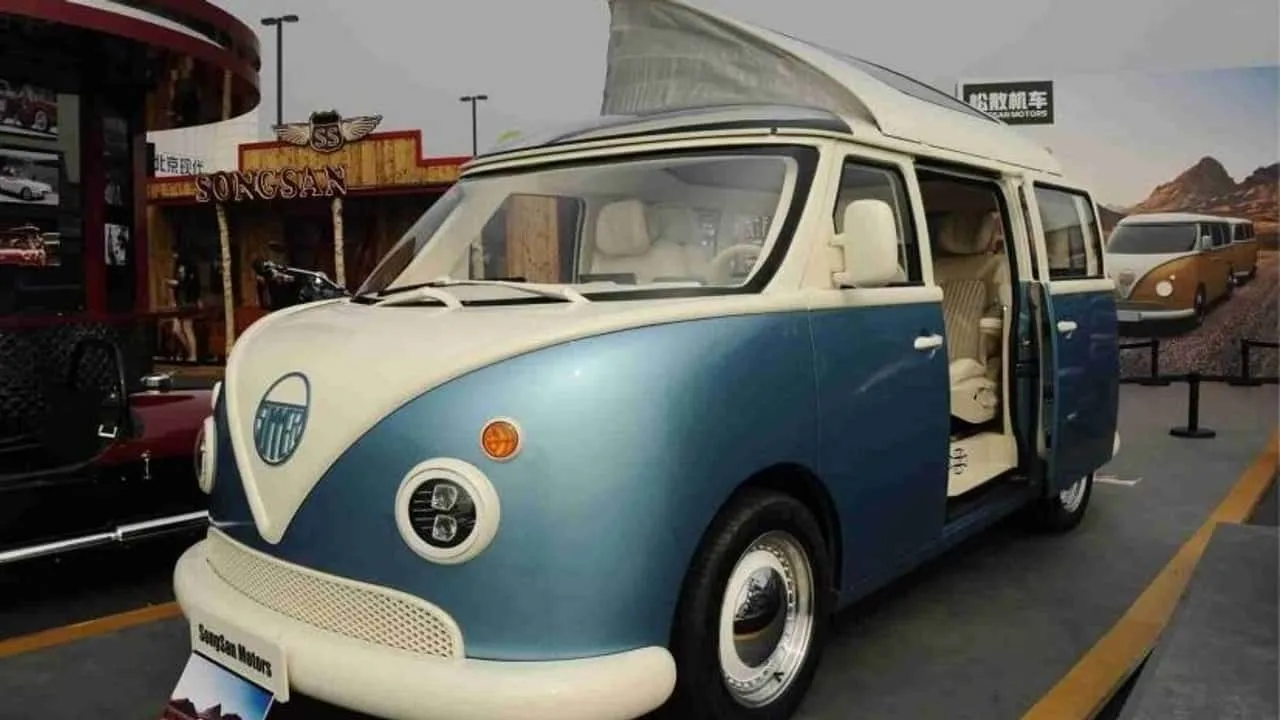
The Corujinha Kombi: The Original and the Copy
The first-generation Volkswagen Kombi is more than just a vehicle – it is a symbol of its time and represents a lifestyle that values simplicity, adventure and versatility. In Brazil, it was nicknamed Little Owl Kombi, due to its round headlights and the shape of the body that resembles the eyes of an owl. Since the 1950s, the Kombi has conquered the world and become the darling of many collectors, especially those who seek to restore the units to preserve the nostalgia of this classic.
However, Songsan Motor decided to “recreate” the model, but with some significant changes, including the plug-in hybrid system and a design with contemporary lines that, in an attempt to maintain a retro feel, ended up looking a bit cartoonish. The van Summer, by Songsan, is easily recognizable as an attempt to emulate the Kombi, but with adaptations that, for many, end up compromising the authenticity of the look.
The Price: An Original Corujinha Kombi or a Songsan Kombi?
In terms of price, the Songsan model is not exactly cheap, but it is in a lower bracket than the classic and well-preserved Kombis. The Songsan Summer is offered in China for the equivalent of around R$ 229 thousand, while a well-preserved classic Kombi, especially those restored and equipped to suit collectors, can reach values that exceed R$ 488 thousand. This considerable difference in value reflects not only the state of conservation of the old Volkswagen units, but also the historical and cultural status of the Kombi.
Still, Songsan Motor opted for a more affordable model that visually resembles the classic, perhaps in an attempt to attract consumers who admire the Kombi's design but want a vehicle with current technology and a less expensive price tag.
The Look of Songsan's Kombi: Similarities and Differences
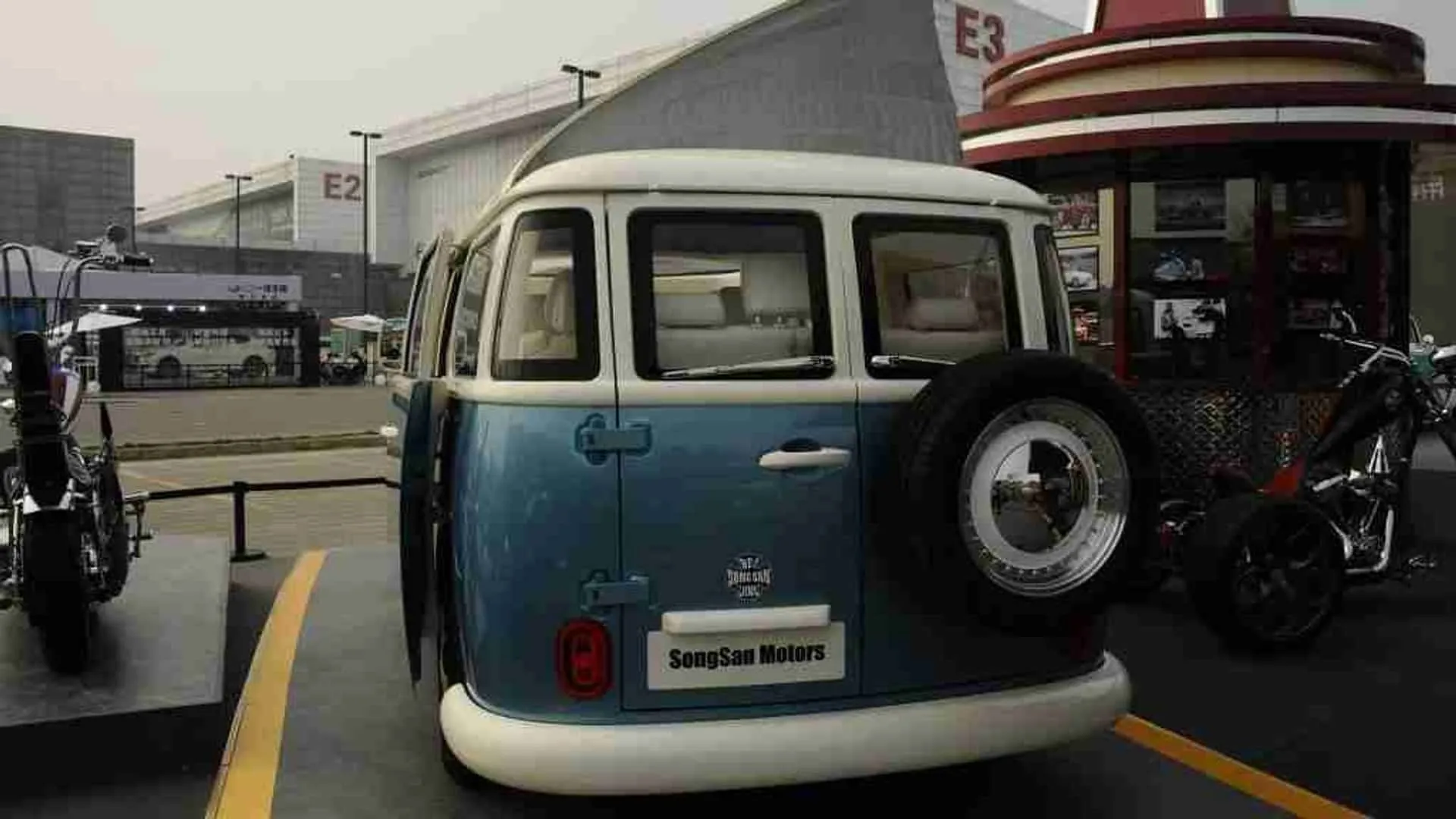
One of the most discussed points about the Songsan Summer is its design. It has details that vaguely resemble the Kombi, such as the two-tone bodywork, to the two sliding side doors and even one spare wheel at the rear. These elements bring a retro footprint and clearly refer to the style of the Volkswagen van. However, when you look closely, it becomes clear that Songsan Motor has mixed features from other vintage models, such as the Chevrolet Astro, resulting in a somewhat awkward and out of proportion aesthetic.
The front of the van is an example of this failed attempt to imitate the iconic Kombi style. While the original Kombi has a short front, the Songsan Summer design features a long, rounded front, which many find comical, resembling a shoe or even something out of a cartoon. This peculiar detail ends up creating a comical impression that diverges from the classic and friendly style of the Kombi.
Plug-in Hybrid Powertrains and Modern Performance
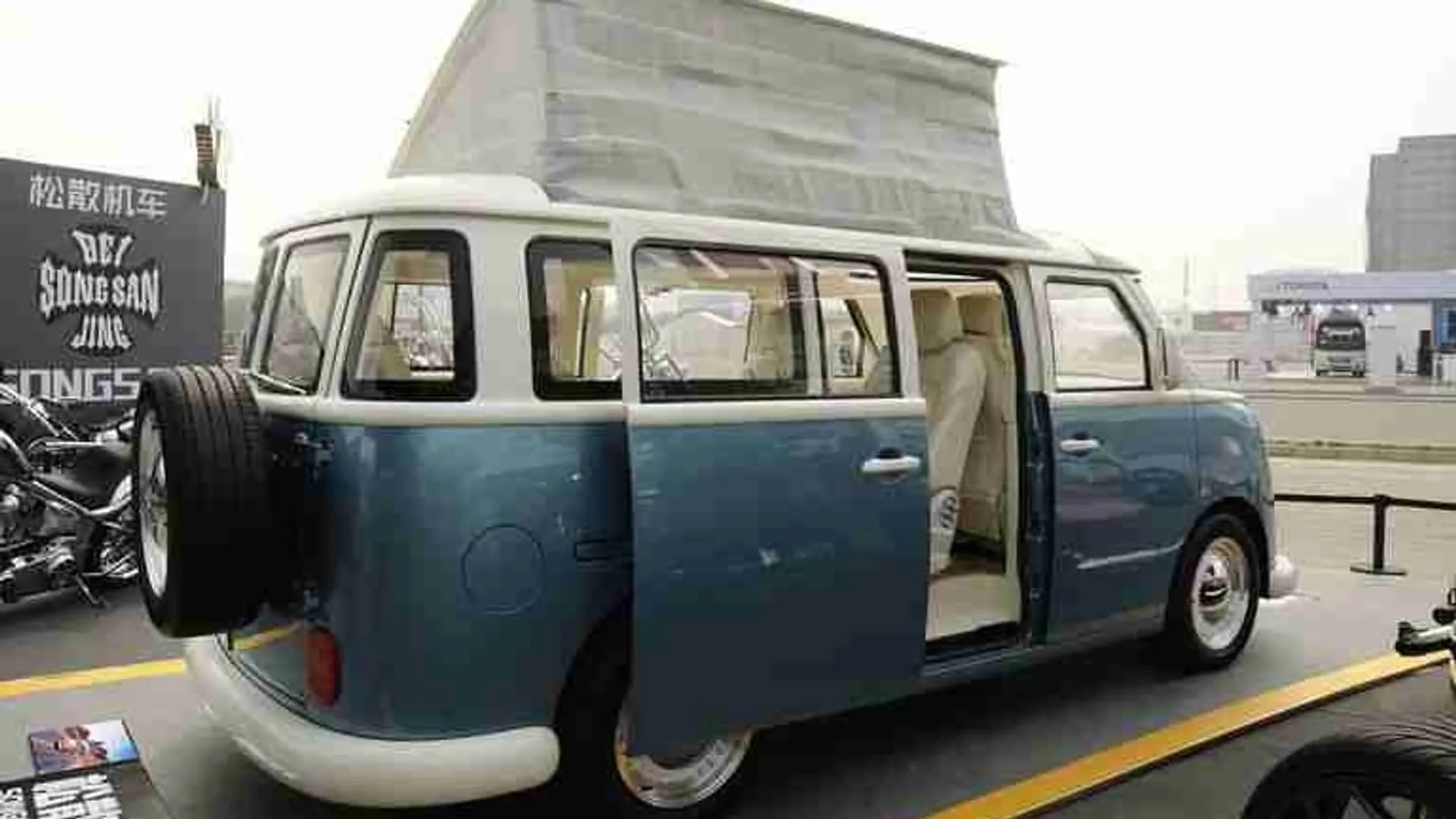
In terms of technology It is motorization, however, Songsan Summer does not disappoint. It is equipped with a plug-in hybrid, which combines a turbocharged combustion engine 1.5 liters with an electric motor, offering a total power of impressive 324 hp. This set allows the van to accelerate from 0 to 100 km/h in just 5 seconds, a performance far superior to that of the original Kombi and which certainly meets the expectations of modern drivers looking for power and agility.
Songsan also has a battery of 16 kWh, although the exact electric range is still unknown. The expectation is that the van will be able to travel short distances in electric mode, something interesting for urban travel. This performance difference puts the Songsan Summer in a very different league from the classic Kombi, which was never designed for high performance, but rather to offer simple and economical driving.
Comfort and Versatility in the Interior
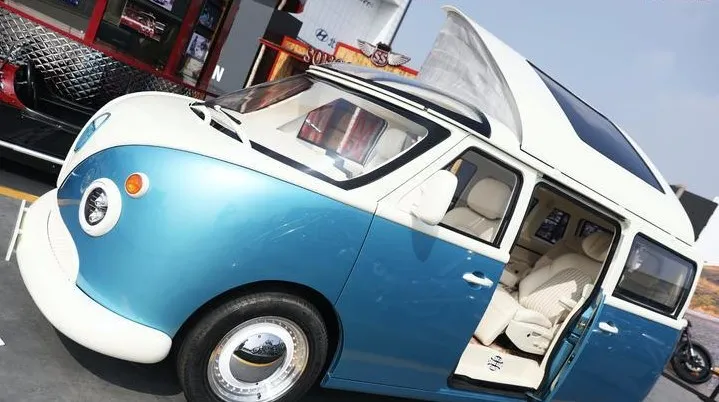
Another aspect in which Songsan Summer tries to stand out is the interior, which has been adapted to modern comfort standards. The van has three rows of seats, providing more space for the occupants. An interesting detail is that the second row middle seat can be converted into a table with cup holders, ideal for small gatherings or meals on long trips.
Additionally, Songsan Summer has a retractable roof, allowing you to increase the number of sleeping places inside the vehicle. This functionality brings the van closer to the idea of a compact trailer, which allows camping adventures and outdoor stays, similar to what many do with Kombis adapted for travel.
Dimensions and Customization Possibilities
With 4,950 mm long, 1,980 mm wide It is 1,880 mm high, the Songsan Summer is larger than the original Kombi, offering more generous interior space and customization options. One version allows the van to be adapted for use as a trailer, transforming it into a mini-house on wheels, something that attracts people who like traveling and camping.
This possibility of transforming the Songsan Summer into a campervan brings an interesting advantage for those who want versatility and space. The original Kombi, although charming, is more compact and limited in terms of adaptations for long stays and storage.
Songsan Summer: Love or Hate?
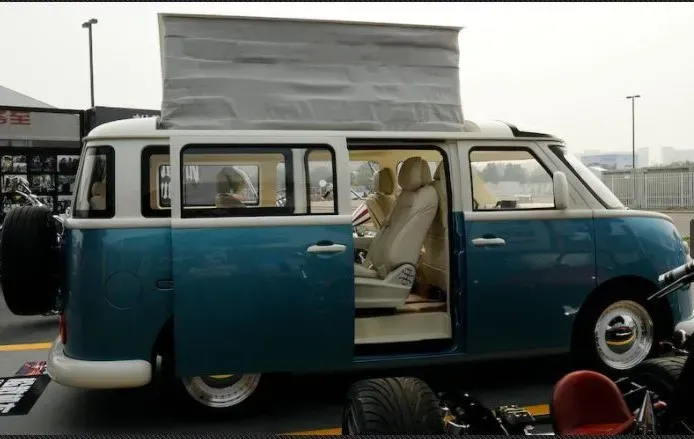
When it comes to design, the Songsan Summer has received mixed reactions. For some, the attempt to replicate the Volkswagen Kombi is seen as a tribute, while for others, the end result is somewhat disastrous, especially due to the choice to maintain a look inspired by, but not faithful to, the original. The front of the van, for example, is widely criticized for resembling a shoe, with proportions that do not match the original idea of the Kombi and create a disproportionate look.
Although the Songsan Summer has its aesthetic limitations, it offers an experience that the original Kombi cannot provide: cutting-edge technology with a hybrid system and surprising speed for a van of this style. These factors make the Songsan model an interesting option for those looking for a vintage look with a touch of modernity, but it certainly does not replace the classic charm of the Volkswagen Kombi, a vehicle that has won the hearts of so many generations.
Conclusion
So, what did you think of this curious model? Songsan Motor? It's an interesting attempt to mix retro style with modern technology or a clear example of how some models are almost impossible to recreate in the same spirit? Chinese van may even carry some features reminiscent of the German van, but it is far from capturing the true essence and charm of the original Kombi. Furthermore, its price tag R$ 229 thousand It's more affordable than a well-maintained Kombi, but for Kombi fans, the exotic look and exaggerated proportions may not be enough to make up for it.
In short, Songsan Summer is an intriguing example of how Chinese automotive industry still walks between innovation and bold inspiration, even if sometimes lack authenticity. It is a mix of tributes with modern elements, but for those who value the original spirit from Kombi, nothing beats the German classic.









